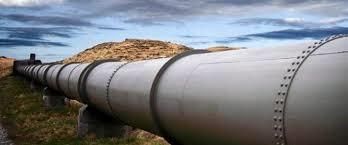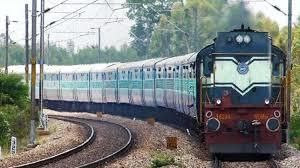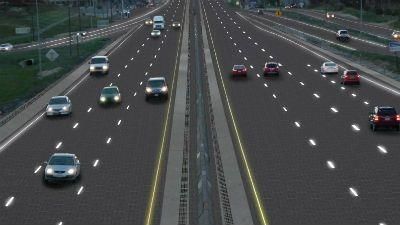NCERT Solutions for Class 10 Geography Chapter 7 - Lifelines of National Economy
Q1: Multiple choice questions
(i) Which two of the following extreme locations are connected by the east-west corridor?
(a) Mumbai and Nagpur
(b) Silcher and Porbandar
(c) Mumbai and Kolkata
(d) Nagpur and Siliguri
Ans: (b) Silcher and Porbandar
The East-West Corridor, one of the Super Highways being implemented by the National Highway Authority of India, connects Silcher (Assam) and Porbander (Gujarat).
(ii) Which mode of transportation reduces trans-shipment losses and delays?
(a) Railways
(b) Roadways
(c) Pipeline
(d) Waterways
Ans: (c) Pipeline
Pipeline transport eliminates the risk of trans-shipment losses or delays because it provides a direct and continuous flow of materials, such as oil, gas, or other fluids, from the source to the destination.
 Pipeline(iii) Which one of the following states is not connected with the H.V.J. pipeline?
Pipeline(iii) Which one of the following states is not connected with the H.V.J. pipeline?
(a) Madhya Pradesh
(b) Maharashtra
(c) Gujarat
(d) Uttar Pradesh
Ans: (b) Maharashtra
Maharashtra is not connected with the H.V.J. (Hazira-Vijaipur-Jagdishpur) pipeline. The pipeline mainly passes through Gujarat, Madhya Pradesh, and Uttar Pradesh.
(iv) Which one of the following ports are the deepest land-locked and well-protected port along with the east cost?
(a) Chennai
(b) Paradwip
(c) Tuticorin
(d) Vishakhapatnam
Ans: (d) Vishakhapatnam
Visakhapatnam Port, located on the east coast of India in the state of Andhra Pradesh, is one of the country's major ports and is renowned for being the deepest land-locked and well-protected port.
(v) Which one of the following are the most important modes of transportation in India?
(a) Pipeline
(b) Railways
(c) Roadways
(d) Airways
Ans: (b) Railways
Railways are the main mode of transportation for both freight and passengers in India. They enable people to engage in various activities such as business, sightseeing, and pilgrimage, while also facilitating the transport of goods over long distances.
 Railways(vi) Which one of the following terms is used to describe trade between two or more countries?
Railways(vi) Which one of the following terms is used to describe trade between two or more countries?
(a) Internal trade
(b) International trade
(c) External trade
(d) Local trade
Ans: (b) International trade
International trade involves the buying and selling of goods, services, and capital across international borders. This type of trade allows countries to expand their markets, access goods and services that are not available domestically, and benefit from the competitive advantages of other nations.
Q2: Answer the following questions in about 30 words.
(i) State any three merits of roadways.
Ans: Merits of roadways:
(a) They are cheaper than railways in terms of construction costs.
(b) Roads can go through dissected and undulating land areas and through steep mountains.
(c) They are economical as loading costs are low and door-to-door service can be availed of.
 Roadways(ii) Where and why is rail transport the most convenient means of transportation?
Roadways(ii) Where and why is rail transport the most convenient means of transportation?
Ans: In the northern plains, rail transport is the most convenient mode of transportation. This is because this region has vast level lands that are good for laying tracks, and huge population and high agricultural productivity, making rail transport a profitable venture.
(iii) What is the significance of the border roads?
Ans: The Border Roads Organisation, established by the Government of India in 1960, builds and maintains roads in border areas, especially in the northern and northeastern regions. These roads improve access in tough terrains and aid in the economic development of these areas.

(iv) What is meant by trade? What is the difference between international and local trade?
Ans: Trade is the movement of goods and services between regions for economic gain. Trade between two or more countries is termed international trade. It may take place through sea, air or land routes. Trade occurring in a region within the same country is called local trade. Local trade is carried in cities, towns and villages.
Q3: Answer the following questions in about 120 words.
(i) Why are the means of transportation and communication called the lifelines of a nation and its economy?
Ans: Lifelines of a nation and its economy:
- Transport system helps in the movement of goods and services from their supply locations to demand locations.
- The means of transport provide an important link between the producers and consumers of goods/products.
- They help in the development of agriculture and industry by providing raw materials and distributing finished goods.
- A well-built transport system brings people from different regions within the country and world closer to one another.
- With the advancement in the system of communication, each country is connected with the rest of the world. As a result, international trade adds vitality to its economy and enriches the lives of the people by raising their living standards.
- Transport - Railways etc., helps in business sightseeing, pilgrimage and transportation of goods. Similarly pipelines, air transport are also very useful in the development of a country. Thus, means of transportation and communication are rightly called the lifelines of a nation and its economy.
(ii) Write a note on the changing nature of international trade in the last fifteen years.
Ans: Changing nature of international trade:
- Before globalisation, generally, bilateral agreements were made to integrate national economies with the world economy.
- Now producers from outside the country can sell their goods and services in other countries.
- Globalisation includes the movement of capital as well as workers from one country to other countries. The restrictions on the import of goods have been removed.
- Under World Trade Organisation (WTO), efforts are being made to have multi-lateral agreements for international trade. WTO is regulating the international trade of goods as well as services.
- Nature of international trade has thus changed. The export of agricultural products, minerals etc., have increased.
- The import of petroleum products has too increased.
- Exchange of commodities and goods have been superseded by the exchange of information and knowledge.
- India has emerged as a software giant at the international level. It is earning large foreign exchange through the export of information technology because of its fast-growing Business Process Outsourcing (BPO) sector.
|
63 videos|445 docs|87 tests
|
FAQs on NCERT Solutions for Class 10 Geography Chapter 7 - Lifelines of National Economy
| 1. What are the key components of the lifelines of the national economy? |  |
| 2. How does transportation contribute to the national economy? |  |
| 3. What role does communication play in the lifelines of the national economy? |  |
| 4. Why is trade considered a lifeline of the national economy? |  |
| 5. How does the development of infrastructure impact the lifelines of the national economy? |  |

|
Explore Courses for Class 10 exam
|

|


















